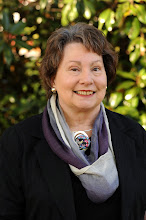Camden, 2011
The Revolutionary War Field Days in Historic Camden was on November 5-6 this year. There were so many things to do, as well as reenactors to talk to about life during the Revolutionary War. Dr. Christine Swager and I told stories about three Revolutionary War women who fought against the British and Tories. Throughout the two days, there were artillery demonstrations, a fashion show, fife and drum performances, and colonial craftsmen. 
The Historic Camden Revolutionary War Site is called an outdoor museum on a 98 acre plot of land. On this weekend, there is a time warp as many walk the paths in colonial costumes. I met Dr. Benjamin Franklin, and he was just as witty as I imagined.
There were shops on Sutler's Row where we could buy replicas of these times. A baker was set up right next to our tent, and the lines to go in his tent were always there. Right before we left, I finally broke down and bought toasted sourdough bread with melted cheddar.
The Battle of Hobkirk's Hill was reenacted on Saturday. The preparation was evident in the camps, as men from both sides readied themselves for their parts. This battle took place on April 25. 1881, but the cannon and musket firing gave reality to the men who fell to the ground.
In the camps, life went on without interruption. There were meals to fix, mending to do, and knitting to complete.
Children of all ages played with sticks, balls, and whatever was lying around. I saw no X Box games set up. A wooden spoon beat a cadence in the background.
The camp was in constant motion and activity. Small children carried buckets to get water. There was practice with bows and arrows. Above is the evidence of hunting expeditions with the tanning of hides. To survive in the eighteenth century, everyone had to be a participant.
The artillery demonstrations helped the visitors realize that everyday life had in its background the possible sounds of enemy fire at all times. The bright sun and cloudless sky could have been deceiving.
 I wonder what these two soldiers were talking about. It appears to be a serious discussion. Even though both are at ease, there is an intensity in their stances. I guess the camaraderie in the military never changes, whatever the war under discussion.
I wonder what these two soldiers were talking about. It appears to be a serious discussion. Even though both are at ease, there is an intensity in their stances. I guess the camaraderie in the military never changes, whatever the war under discussion. This brings to my mind a quote by Peter Muhlenberg from a Lutheran sermon read at Woodstock, Virginia in 1776. "There is a time for all things, a time to preach and a time to pray, but those times have passed away. There is a time to fight, and that time has now come."




























































